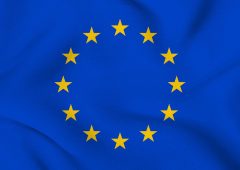JPMorgan Warns U.S. Economy May Be Slowing Behind the Headlines
09.06.2025 11:00 2 min. read Alexander Stefanov
Despite encouraging job numbers on the surface, JPMorgan Chase’s chief global strategist David Kelly says the U.S. economy is quietly losing momentum.
In a recent CNBC interview, Kelly cautioned that beneath the positive headline figures lies a broader trend of economic softening that many are overlooking.
While May’s payroll report showed a gain of 139,000 jobs and a stable 4.2% unemployment rate, Kelly noted that revisions to previous months paint a less optimistic picture. The Labor Department lowered March and April’s job gains by 95,000, and the Household Survey—a separate but often telling indicator—recorded a massive drop of over 600,000 jobs last month.
“That survey is volatile, but it’s still a warning sign,” Kelly said. “We’re averaging just 124,000 new jobs per month in 2025 so far, down from 168,000 in 2024. The slowdown is happening—it’s just not obvious in the headline numbers.”
He added that misleading trade figures and quirks in GDP calculations are masking the broader economic deceleration.
Supporting this view, PNC Bank highlighted a concerning development in labor force participation. According to the Pennsylvania-based bank, the number of adults working or seeking work shrank by 625,000 in May—essentially offsetting job gains and suggesting growing discouragement among potential workers.
While economic headlines remain upbeat, Kelly’s message is clear: the underlying data tells a different story, and signs of strain are beginning to emerge across the economy.
-
1
U.S. PCE Inflation Rises for First Time Since February, Fed Rate Cut Likely Delayed
27.06.2025 18:00 1 min. read -
2
Key U.S. Economic Events to Watch Next Week
06.07.2025 19:00 2 min. read -
3
Gold Beats U.S. Stock Market Over 25 Years, Even With Dividends Included
13.07.2025 15:00 1 min. read -
4
U.S. Announces Sweeping New Tariffs on 30+ Countries
12.07.2025 16:30 2 min. read -
5
US Inflation Heats Up in June, Fueling Uncertainty Around Fed Cuts
15.07.2025 16:15 2 min. read
US Inflation Heats Up in June, Fueling Uncertainty Around Fed Cuts
U.S. inflation accelerated in June, dealing a potential setback to expectations of imminent Federal Reserve rate cuts.
Gold Beats U.S. Stock Market Over 25 Years, Even With Dividends Included
In a surprising long-term performance shift, gold has officially outpaced the U.S. stock market over the past 25 years—dividends included.
U.S. Announces Sweeping New Tariffs on 30+ Countries
The United States has rolled out a broad set of new import tariffs this week, targeting over 30 countries and economic blocs in a sharp escalation of its trade protection measures, according to list from WatcherGuru.
Key U.S. Economic Events to Watch Next Week
After a week of record-setting gains in U.S. markets, investors are shifting focus to a quieter yet crucial stretch of macroeconomic developments.
-
1
U.S. PCE Inflation Rises for First Time Since February, Fed Rate Cut Likely Delayed
27.06.2025 18:00 1 min. read -
2
Key U.S. Economic Events to Watch Next Week
06.07.2025 19:00 2 min. read -
3
Gold Beats U.S. Stock Market Over 25 Years, Even With Dividends Included
13.07.2025 15:00 1 min. read -
4
U.S. Announces Sweeping New Tariffs on 30+ Countries
12.07.2025 16:30 2 min. read -
5
US Inflation Heats Up in June, Fueling Uncertainty Around Fed Cuts
15.07.2025 16:15 2 min. read


